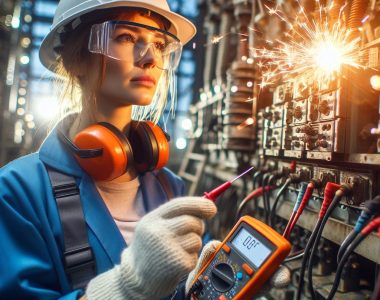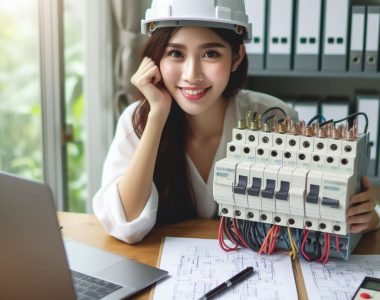
Let’s delve into the fascinating ways Artificial Intelligence (AI) is revolutionizing maintenance and engineering fields. From predictive maintenance to design optimization, AI is reshaping how we approach these critical domains.
1. Predictive Maintenance: Enhancing Reliability and Efficiency
Predictive maintenance is a game-changer for industries that rely on machinery and equipment. Here’s how AI contributes:
- Early Fault Detection: AI algorithms analyze sensor data from machines, detecting anomalies and predicting potential failures. By identifying issues before they escalate, companies can schedule maintenance proactively, minimizing downtime and reducing costs.
- Condition-Based Monitoring: AI continuously monitors equipment conditions. When deviations occur, it triggers alerts or maintenance requests. For example, in aviation, AI predicts engine component failures based on real-time data, allowing airlines to replace parts before they cause disruptions1.
- Reduced Unplanned Downtime: Imagine a factory where machines never break down unexpectedly. AI-driven predictive maintenance achieves this by optimizing maintenance schedules, ensuring that equipment is serviced precisely when needed.
2. Design Optimization and Simulation
AI accelerates the design process, making it more efficient and effective:
- Generative Design: AI generates multiple design alternatives based on specified parameters. Engineers can explore innovative solutions that might not have been considered otherwise. For instance, in architecture, AI can propose optimal building layouts based on energy efficiency, structural integrity, and aesthetics.
- Simulation and Testing: AI simulates complex scenarios, such as stress testing bridges, aerodynamics of aircraft, or thermal behavior in electronics. By running thousands of simulations, engineers gain insights into performance, safety, and reliability.
3. Energy Efficiency and Sustainability
AI plays a pivotal role in achieving sustainability goals:
- Energy Management: AI optimizes energy consumption in buildings, factories, and transportation systems. Smart grids use AI to balance supply and demand, reducing wastage.
- Renewable Energy: AI predicts solar and wind energy production, aiding grid integration. It also optimizes energy storage systems, ensuring efficient use of batteries.
4. Supply Chain Optimization
AI streamlines supply chains, enhancing efficiency and resilience:
- Demand Forecasting: AI analyzes historical data, market trends, and external factors to predict demand accurately. This helps manufacturers optimize production schedules and inventory levels.
- Supplier Selection: AI evaluates supplier performance, pricing, and risk factors. It assists in making informed decisions about sourcing components.
5. Quality Control and Defect Detection
AI ensures product quality and reduces defects:
- Visual Inspection: AI-powered cameras inspect products on assembly lines, identifying defects with high precision. In automotive manufacturing, AI detects flaws in paintwork or welds.
- Natural Language Processing (NLP): AI analyzes customer feedback, warranty claims, and service reports. It identifies patterns related to product defects, helping engineers improve designs.
6. Autonomous Systems and Robotics
AI drives autonomous vehicles, drones, and robots:
- Self-Driving Vehicles: AI processes sensor data (lidar, radar, cameras) to navigate safely. It predicts pedestrian movements, traffic flow, and road conditions.
- Robotic Automation: AI-powered robots handle repetitive tasks in factories, warehouses, and logistics centers. They assemble products, pack boxes, and even perform maintenance.
7. Human-Machine Collaboration
AI complements human expertise:
- Expert Systems: AI assists engineers by providing recommendations, troubleshooting steps, and best practices. It’s like having a virtual mentor.
- Collaborative Robots (Cobots): These robots work alongside humans, enhancing productivity. Cobots can lift heavy objects, perform precision tasks, and adapt to changing requirements.
Conclusion
The marriage of AI and engineering is transformative. As AI continues to evolve, engineers must embrace its potential while addressing ethical concerns and ensuring transparency. The future belongs to those who combine human ingenuity with AI’s computational power. 🌟🔧🤖
Remember, AI isn’t here to replace engineers; it’s here to empower them! 🚀



